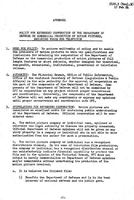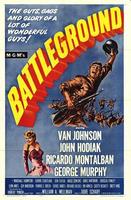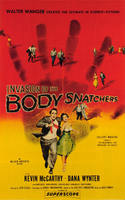Selling Opinions - Making Policy
Hollywood and the Cold War
Private organizations like the NCFE were not the only ones to work with the government to influence public opinion. In the 1950's and 1960's the Department of Defense cooperated extensively with Hollywood to support war movies which they deemed useful to the war preparation effort. The goal was to prepare American society for armed conflicts that might result from the Cold War through "good war movies," like Sands of Iwo Jima. The Department of Defense asserted that the "Good War Movie" was "in the best interest of national defense and the public good". To promote cooperation, on February 17, 1954 the Department of Defense issued Instruction 5122.3, "Policy for Extending Cooperation of the Departments of Defense on Commercial Production of Motion Pictures including those for Television".
The "good" war movie was supposed to depict the American forces as just and humane. This resulted in the ommitance of torture scenes from early war movies, which focused instead on the idea of patriotic regeneration through conquering a frontier from warped, evil attackers.


